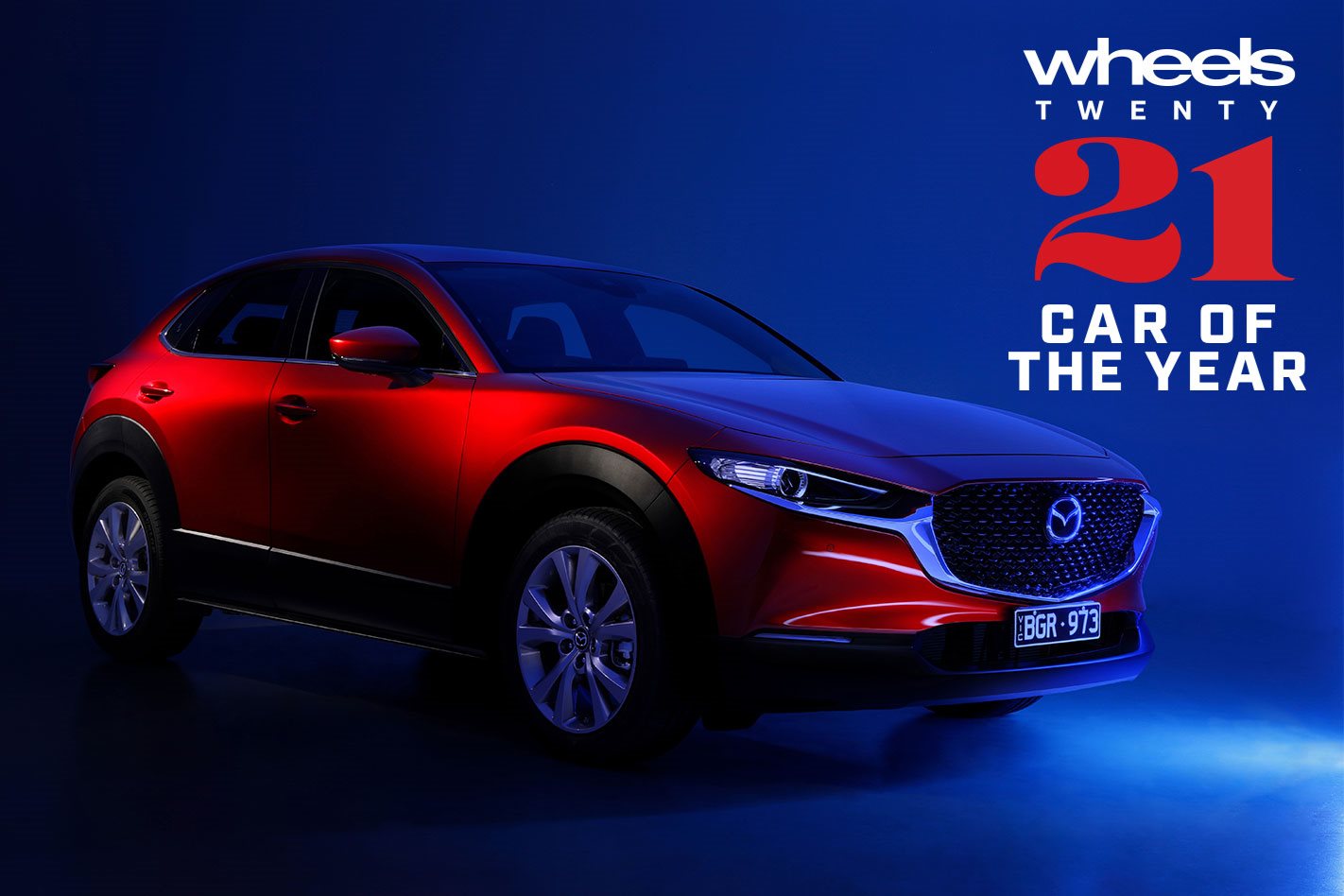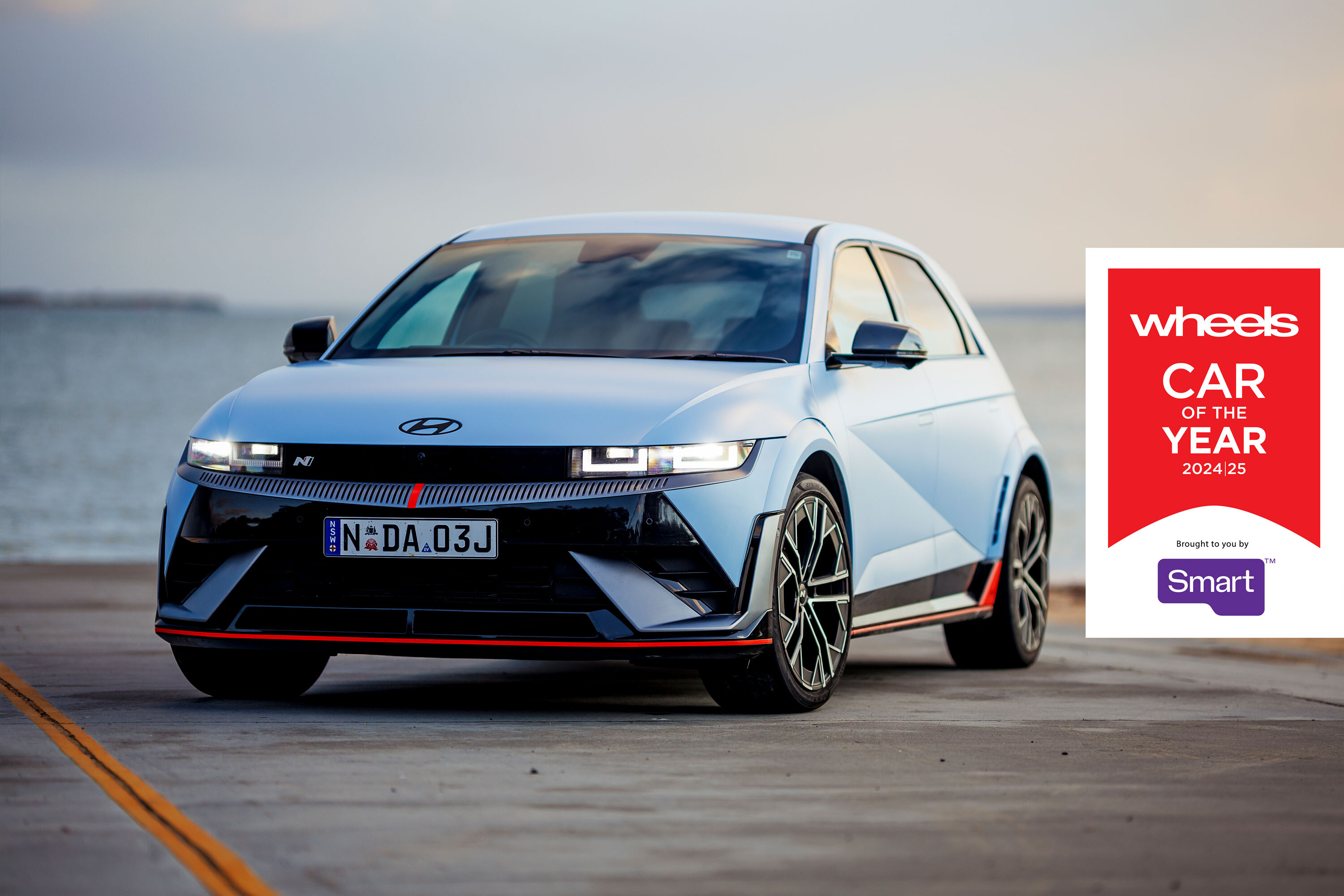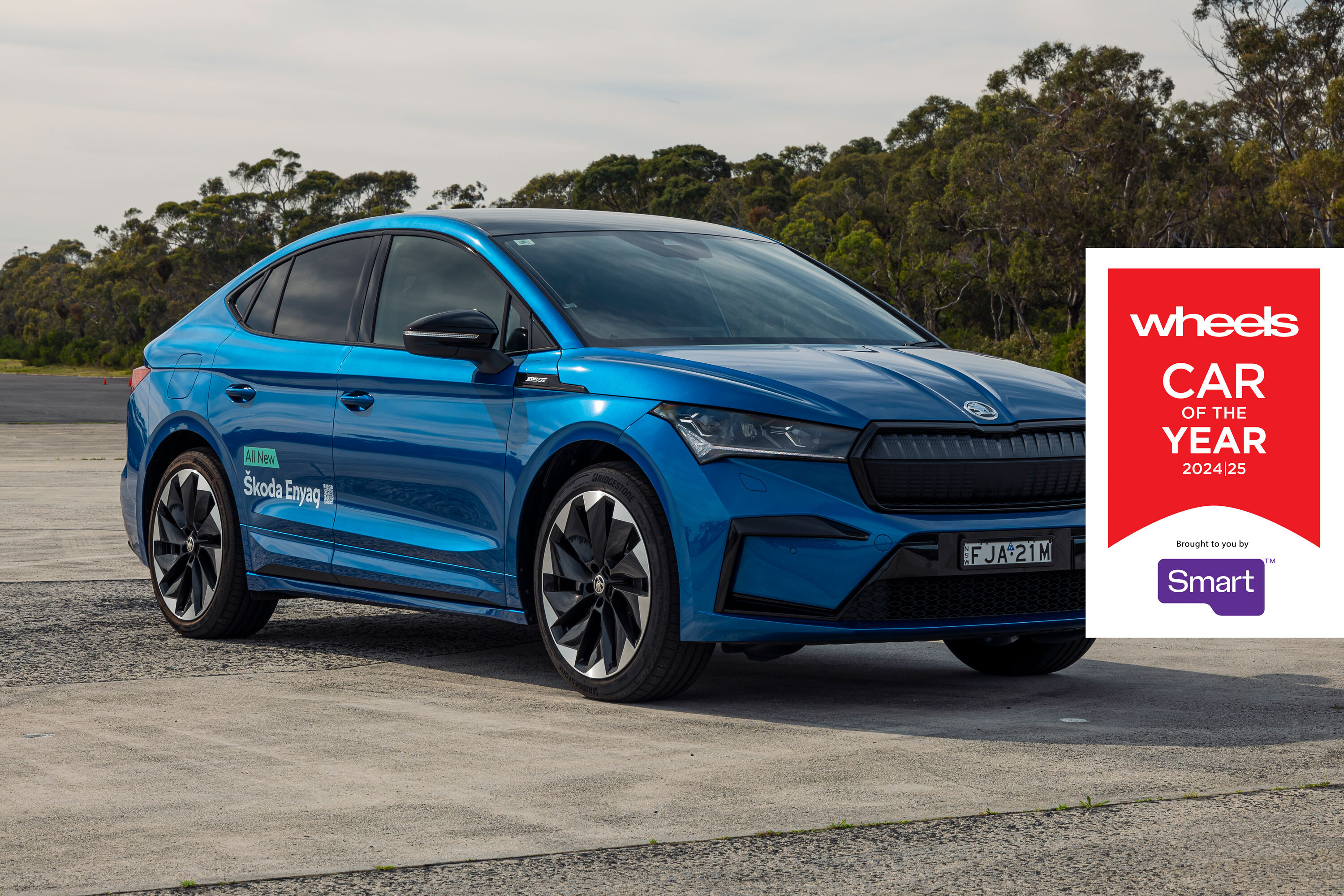‘Unanimity’ can be a tricky word to say; much harder to achieve. In an increasingly divided and opinionated world, getting a disparate group of individuals to form a unilateral consensus on anything can be near-impossible.
The COTY judging process is often no exception, yet for 2021, in a rare moment of great(ish) minds thinking alike, all six members of the judging panel cast their vote for the winner you see here.
There would be no split decision, no recasting, no blow-ups or toys thrown out of the pram. The Mazda CX-30 is the 2021 Wheels Car of the Year, and all of us agreed on it.
For Mazda, it’s one hell of an achievement, and takes the company’s tally to nine COTY victories since the award’s inception in 1963, putting the Hiroshima-based brand only one win behind Holden as the award’s most successful manufacturer of all time. (Hot tip for those who enjoy a punt: Mazda has the better odds compared to the Lion brand to increase its haul…)
So where exactly does the CX-30’s brilliance lie? Well, that warrants deeper dissection, because that’s arguably what it doesn’t have: an area of true breakthrough brilliance. The old expression ‘jack of all trades; master of none’ used to be one of denigration; a suggestion that a worker was versatile yet lacked an area of true speciality.
In the case of the CX-30, it’s actually the highest compliment we can deliver it. As we’ll outline here, the key to its COTY success was not a couple areas of pure genius; instead it scored solidly against all five criteria, and resolutely did not drop the ball in any measurable area.
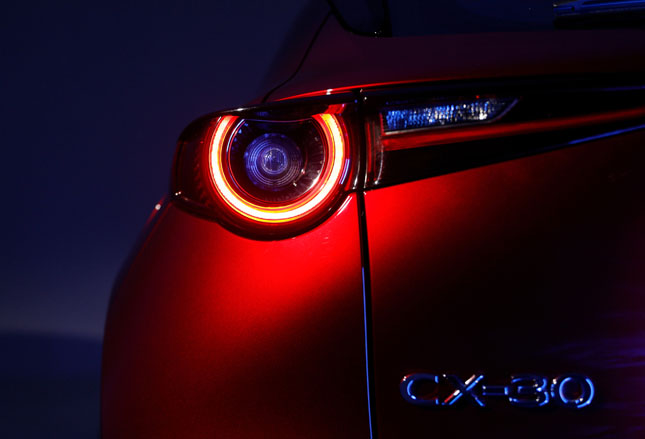
Speaking more broadly about its appeal, perhaps editor Dylan Campbell said it best: “For me, the CX-30 is a car that democratises luxury; it has a level of craftsmanship not evident in rivals. You sense the passion and commitment that’s gone into it, making it feel like a treat every time you get in.”
That overarching sentiment started to flow from the moment the judges really crawled around and through the car on day one.
Mazda has clearly designed the CX-30 as a crossover, rather than a more pragmatic, boxy SUV, effectively making it a higher-riding (by 25mm) wagon version of the Mazda 3 on which it’s based. No-one could argue with the logic, even if it does bring a few potential compromises to packaging. Headroom in the rear is only just adequate for six-footers, and the boot, at 317 litres, is on the small side for this class.
“I’m okay with that,” conceded DC. “I think a comparatively small boot like this is probably more a theoretical disadvantage for most people rather than a regular real-world annoyance. For me, the exterior celebrates design and style; unlike rivals, where design feels like more an obligation.”
Byron was also quick to point out a design advantage held by the CX-30 over the related 3: “That the six-light glass area means more light floods in than in the 3. And I really like the extra splashes of colour for a change inside a Mazda – navy blue or brown as contrasts to the black on most variants; it gives a nice lift to the ambience.”
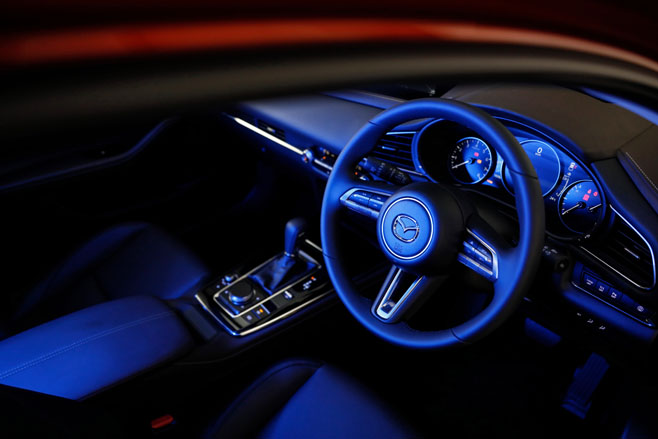
The three variants we had on test gave the judges a solidly indicative sample of the nine-strong CX-30 line-up. Our least-expensive tester was the G20 Evolve FWD (one model up from base Pure) with its 2.0-litre atmo four/six-speed auto combo, priced at $31,490.
In the middle sat the G25 Touring, powering its front wheels by the 2.5-litre four tied to the six-speed auto, and priced at $36,490.
Topping our trio was the CX-30 flagship; the X20 Astina, driving all four wheels by the new Skyactiv-X 2.0-litre petrol compression-ignition engine, priced at $46,490
It was broadly agreed that that the top-spec X20 Astina doesn’t represent the CX-30 line-up at its best, so let’s address the value question first, as it’s clear the CX-30 doesn’t attempt to lure customers into the showroom via a bargain-basement price tag.
Cheapest model in the line-up is the $28,990 Pure with a six-speed manual – a model with loads of appeal but won’t find favour with many Aussies. Cross-shopping the CX-30 against the Mazda 3 on which it’s based sees the Japanese-built CX-30 some $3500 dearer than the corresponding 3 Pure.
It’s a sizeable hike, given the similarities in equipment, but the judges still felt that within this segment, the CX-30 delivered decent value for money against the likes of rivals like the Kia Seltos, Honda HR-V and Toyota C-HR.
“If it wore a premium badge, it would be considered a bargain,” said Inwood.
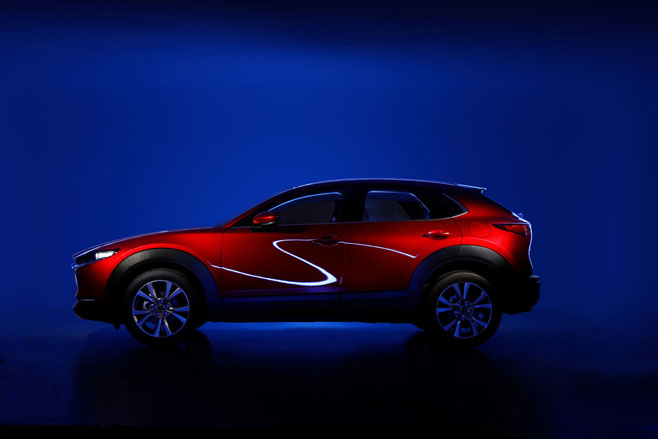
Byron went a step further after being a bit underwhelmed by the interior finishes of the Mercedes-Benz GLB, drawing on his bottomless well of pop-culture references: “It’s like the CX-30 and GLB have had a Freaky Friday moment, where the Mazda feels like a Mercedes and the Mercedes feels like a Mazda.”
As for powertrains, both in performance and efficiency, the CX-30 managed a decent pass mark from the judges, rather than any glowing distinctions.
The two mainstream engines are well-developed and effective, but very conventional, and haven’t evolved significantly from those in the previous-generation Mazda 3 on which they’re based. The six-speed automatics, too, don’t break any boundaries.
Could all three powertrains make good use of an eight-speed transmission? Probably. But the fact this trio performs well, are not thirsty, and can deliver a decent level of driver satisfaction when stirred along, was enough to redress the lack of innovation.
“Compared to the 2.0-litre, the 2.5-litre has appreciably more oomph, especially as you floor it with the engine’s revs in the mid-range, making it a deceptively fast and punchy performer,” noted Byron. “But with both, you just need to be willing to flex your right foot regularly.”
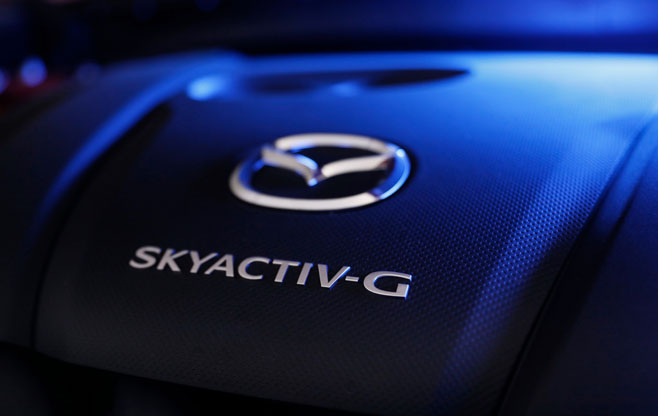
As for the Skyactiv-X, Mazda originally suggested this engine, which uses a supercharger and high compression to provide what the company calls Spark Controlled Compression Ignition (SPCCI), would be around 15 percent more frugal than the regular 2.0-litre Skyactiv-G engine (with a combined ADR figure of 6.5L/100km) but our real-world testing has seen them closer to par.
Still, given the X’s increased outputs, there was acknowledgment that its real-world consumption in mixed conditions that Wheels achieved of around 5.7L/100km (actually less than its official combined number of 6.0L/100km) was commendable in context of its performance.
Overall, though, DC was just one judge left a little underwhelmed by the Skyactiv-X engine: “It doesn’t have the level of torque in the step-off phase I was expecting, and nor is does it have an appreciably more eager and sparkling top-end,” our editor reckoned. Robbo, too, raised the issue of the X’s high-rpm noise.
So without a major gain in efficiency over the conventional G-series 2.0-litre, the judging panel was left questioning if the output gains were enough, especially when considering the hefty price premium attached to the new-tech engine.
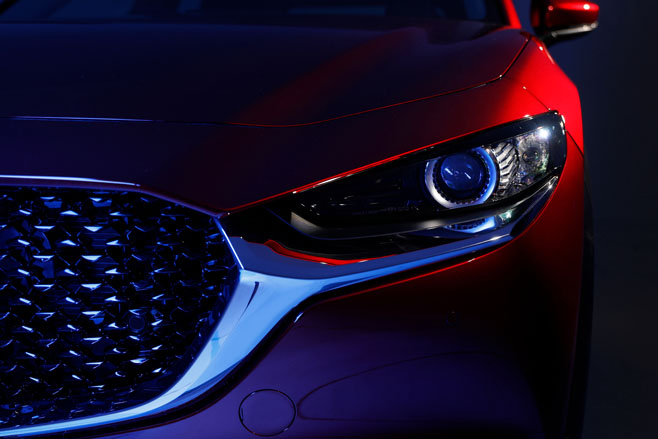
Byron brought some balance to the debate by pointing out that this was very much a new technology well short of maturity, and that there was more to come: “This year there’s an update that will bump outputs by 8kW/16Nm, so totals of 140kW/240Nm,” our walking automotive oracle reminded everyone.
Good point, but the takeout was that while Mazda is to be applauded for developing new tech with the potential to extend the effective life of the ICE engine, the X’s real-world benefits at this point aren’t massive, and it remains to be seen if the Skyactiv-X can really introduce a step-change to push it well clear of the larger, conventional 2.5-litre engine.
Regardless, any judge who completed our demanding test loop in any of the CX-30 variants had plenty of positives to share, especially in the fundamentals of core dynamic competence, suppression of road noise (once a real Mazda weak spot) and willing, engaging character when the pace was ramped up.
The dirt-road testing, too, showed Mazda really knows its stuff when it comes to ESC and ABS calibrations, delivering one of the most engaging chassis to push to the limit without excessive intrusion.
Inwood reflected the broader consensus when he said of the G20: “Not the strongest engine, but adequately isolated and not coarse.”
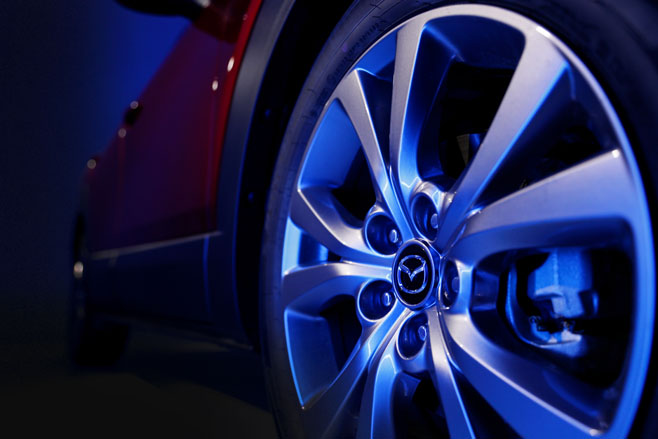
As one of the three finalists driven away from the proving ground, the CX-30 still had to prove itself with four adults on board.
Mazda’s crossover will be right-sized for families with two sub-teen kids, but that doesn’t mean it’s purgatory for adults in the back. I’m six foot tall, and had just enough room behind a few of the judges on the roads around Lorne.
Personally I found the rear seat base, backrest angle, toe room, and visibility, all perfectly acceptable. The lack of USB ports in the back is a miss, but running an extension cable from the port in the centre console box is a largely painless workaround.
As for safety, it probably goes without saying that the CX-30 aces a five-star ANCAP rating, but dig a little deeper and you’ll see it achieves a record-high 99 percent adult occupant protection score in the Euro NCAP tests.

All models include seven airbags (dual-front for driver and passenger, driver’s knee, side and curtain for all outboard occupants), as well as an alphabet soup of safety-related acronyms listed here in Mazda-speak.
These are: AEB (Autonomous Emergency Braking), Driver Attention Alert (DAA), Emergency Stop Signal (ESS), Forward Obstruction Warning (FOW), Hill Launch Assist (HLA), Lane Departure Warning (LDW), Lane-keep Assist System (LAS), Rear Cross Traffic Alert (RCTA), Smart Brake Support – Rear (SBS-R), Smart Brake Support – Rear Crossing (SBS-RC), Smart Brake Support (SBS), and Traffic Sign Recognition (TSR). There’s also radar cruise control with stop/go functionality, rear parking sensors and a 360-degree view reverse camera on all grades.
In other words, every CX-30 includes as standard a level of safety and driver-assist functionality that most other brands charge extra for. The latter, by the way, even runs to a quality head-up display, sat-nav and digital radio – from the entry-level grade up.
“You could happily spend under $30K and not feel like you’re missing out,” said Byron.
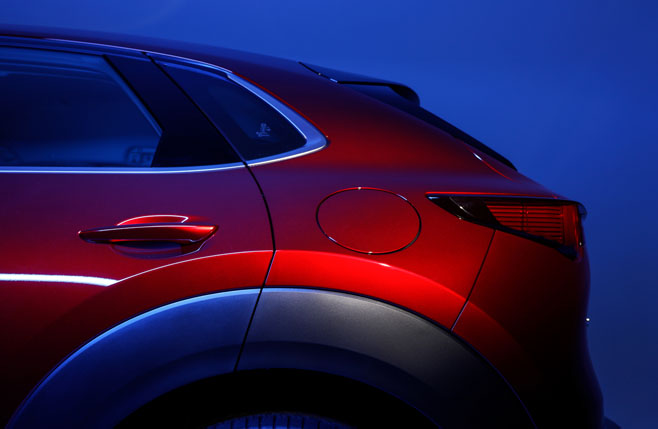
Which starts to swing the conversation around to the CX-30’s technological advances, where the judges agreed that this was an area in which it was sound, rather than bringing anything especially revolutionary to the segment. (Apart from the Skyactiv-X engine, of course…)
The multimedia system, as one example, comprises an 8.8-inch stand-alone screen; not huge, but large enough for decent legibility of all the functions. But the fact it’s controller-based, not a touchscreen, means it won’t find universal favour.
“Doesn’t exactly feel cutting edge compared to say, the very latest smartphone-style designs offered elsewhere, such as in the Kia Seltos,” noted Byron. The lack of a wireless smartphone charger, and the use of USB-C ports were two areas that the judges reckoned Mazda had room for improvement.
But multimedia/connectivity is just one – admittedly highly visible – example of the CX-30’s tech story. Elsewhere, under the skin, the depth and effectiveness of the safety suite was deemed sufficient to boost the Mazda’s score back up to a solid pass.
When time came for final votes to be cast, it required one of the shorter durations for decision-making in recent COTY history. So while this period of 2020-’21 will be remembered as a time when the world got very sick, it will also go down as the point where Mazda pulled the compact SUV into rude health.
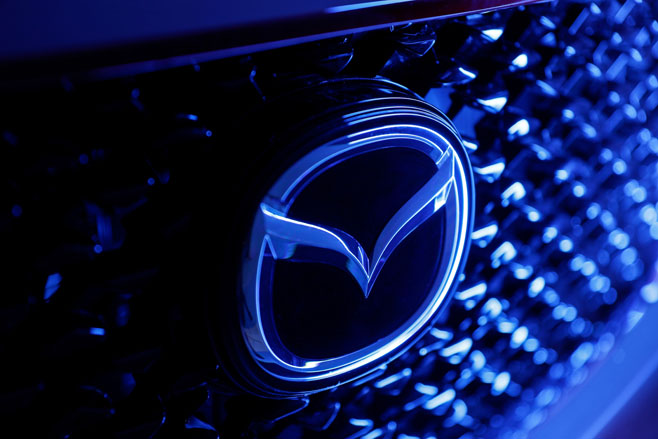
Richard Ferlazzo on the Mazda CX-30’s design
“Designers will always tell you that it all starts with good proportion, and to create stylish proportions usually means there has to be a compromise somewhere.
“Mazda is clearly aiming the CX-30 at buyers looking for more style, and prepared to make small compromises for the privilege.”
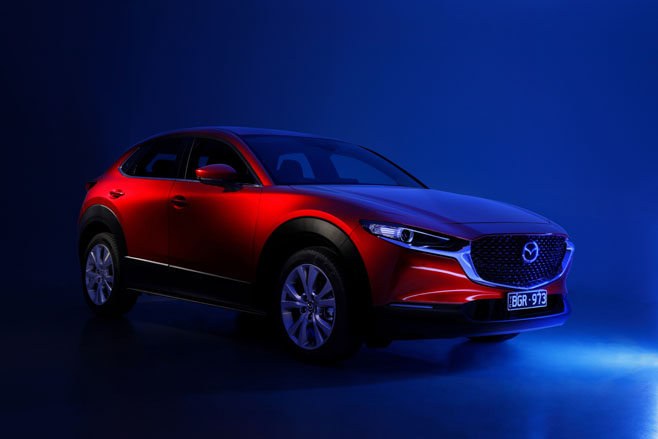
“In this case, the compromise is in the rear, with less room in the back seat and cargo space than a boxier competitor. But it’s the rear styling of this car that really makes it look great, and Mazda hasn’t let the pendulum swing too far to make it impractical.
“The black wheelarch mouldings are a touch too tall for my liking, but overall, I think they’ve got the balance just right. The interior, too, is a triumph; rich and classy without obvious penny-pinching. I’d be proud to be able to say I designed this car.”
For more on our 2021 Wheels Car of the Year, see the links below.
MORE: CX-30 news and reviews MORE: All Mazda stories MORE: All Wheels COTY content


